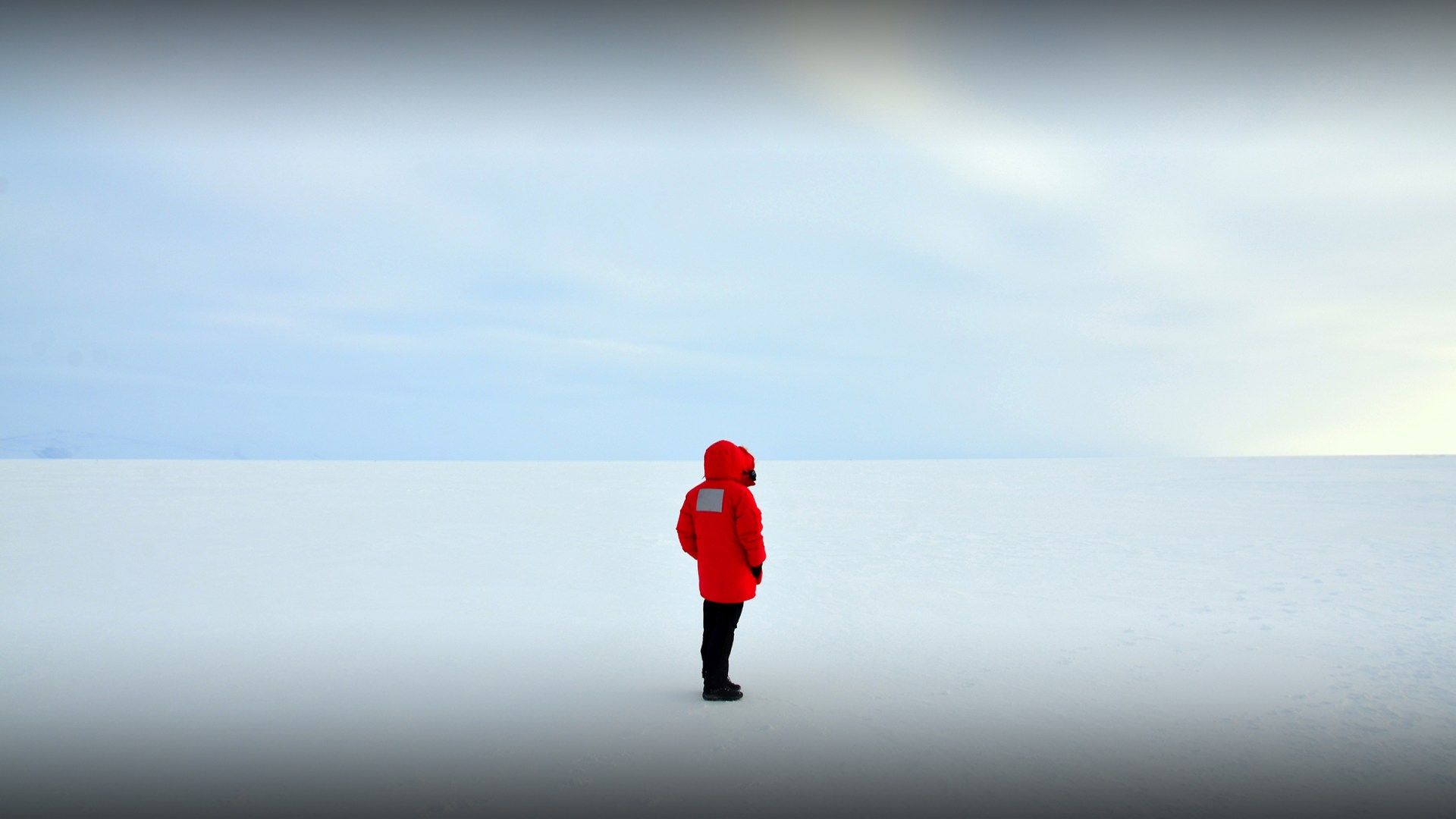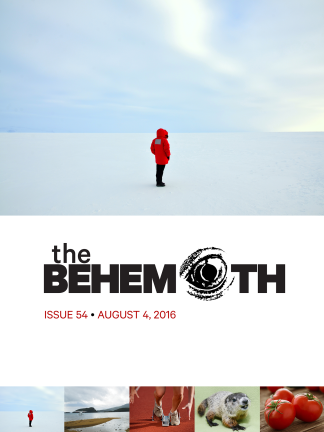“This pure Land of the South has many gifts to squander upon those who woo her, chiefest of these gifts is that of her beauty. Next, perhaps, is that of grandeur and immensity, of giant mountains and limitless spaces, which must awe the most casual, and may well terrify the least imaginative of mortals.” — Apsley Cherry-Garrard, The Worst Journey in the World
When I first saw the world’s largest desert from an airplane, I did not see sand, as one might expect. I saw enormous cliffs of ice looming over the frozen ocean. And beyond them, the tops of mountains protruded from snowfields, like Michelangelo’s unfinished prisoners writhing out of raw marble. The ice in Antarctica is older than recorded history, yet the ice itself records time in layers like rings on a tree, engulfing whatever it can—air trapped between the arms of snowflakes, a lost mitten, an old tent, mountains, bodies.
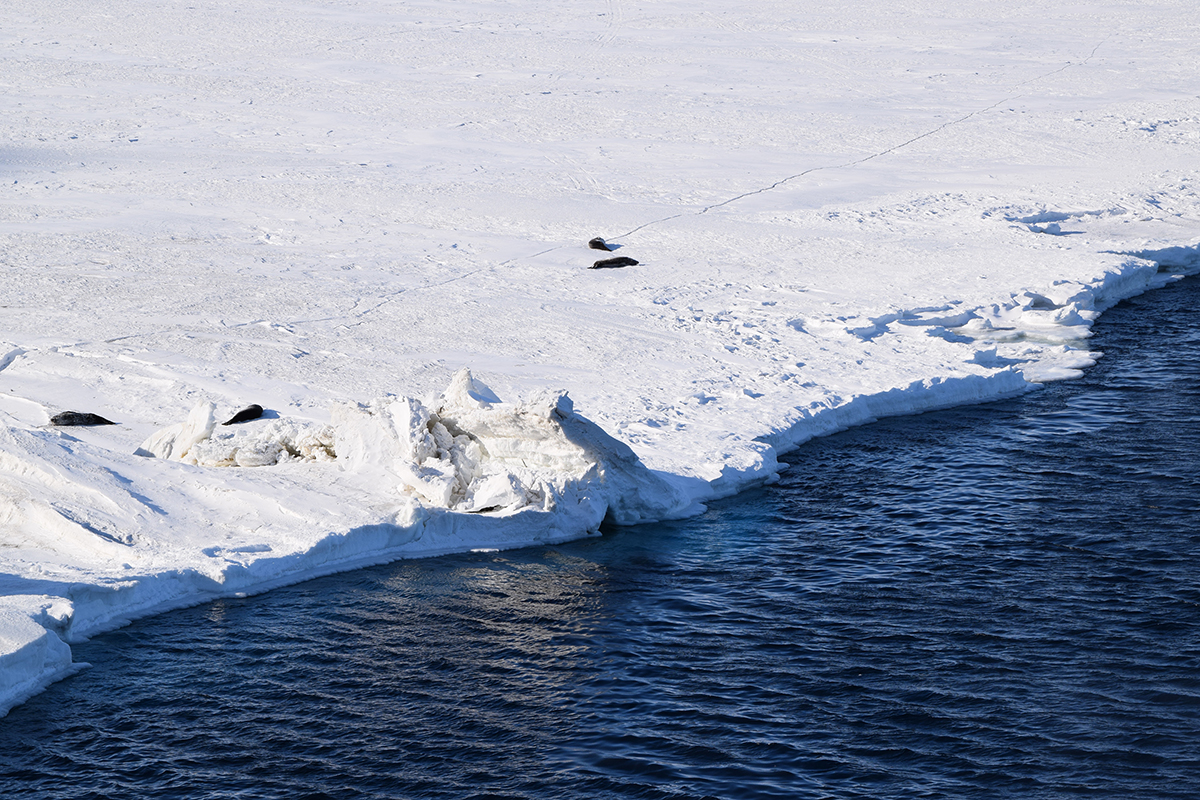
I heard my co-workers refer to Antarctica, this white emptiness, as simply the Ice—and it was easy to see why. But Antarctica is anything but empty. It is filled to the brim.
Consider the weight and volume of its ice and snow: Antarctica’s twenty-seven thousand million billion tons of ice (that’s 54,000,000,000,000,000,000 pounds) is so heavy that it is pushing the land down beneath it. Antarctica is considered a desert because of its lack of precipitation, yet all of this ice—70 percent of the world’s freshwater—is from precipitation. Antarctica is the driest region in the world, and scientists estimate that its driest place, aptly named the Dry Valleys, hasn’t received precipitation in two million years. Even the second driest place on earth, a portion of Chile’s Atacama Desert, was graced with rain just over 500 years ago. The Gamburtsev Mountains, as tall as Europe’s Alps, are completely entombed in ice. On average, Antarctica’s ice is 6,000 feet thick, and it’s 16,000 feet at its thickest—that’s over three miles of ice.
Yet the ice that covers Antarctica is not singular—one great, big slab of run-of-the-mill freezer ice; it is manifold and takes on myriad forms. There’s the ice cap, which is related to ice sheets and ice fields, which turn into ice shelves that break off into icebergs. But don’t confuse icebergs with ice floes (which may have once been fast ice) that turn into ice packs, otherwise known as drift ice. Then there’s blue ice, white ice, sheathing ice, pancake ice, feather ice, moat ice, grease ice, brash ice, platelet ice, anchor ice, ice caves, ice fields, ice flowers . . . the list goes on.
There were only two types of ice that concerned me. The first was the ice road, because my task from October through February was to transport personnel—contractors, flight crews, and scientists—and the second was the Ross Ice Shelf, where my passengers worked.
The Ross Ice Shelf is the largest floating unit of ice in the world—about the size of France. Glacial ice flows off of the Antarctic continent like a conveyor belt (one kilometer a year at its fastest) and stays frozen as it moves over open water, forming an ice shelf. So the ice shelf is floating, but not freely: it is moored on two sides to the continent by the glaciers that create it.
From volcano-laden Ross Island, you can see a thin but discernible line stretching across the ice to the horizon: This is where the edge of the ice shelf meets the sea ice or, depending on the time of year, open water. This intersection—of shelf and land and sea—is the furthest south that a ship can possibly sail, so some of the early Antarctic explorers, hungry to reach the South Pole first, began here. They knew the ice shelf as “the barrier,” the first obstacle on an excruciating journey to glory, among other things.
After crossing the barrier in 1903 and beholding the polar plateau, British explorer Robert Falcon Scott wrote:
It is not what we see that inspires awe, but the knowledge of what lies beyond our view. We see only a few miles of ruffled snow bounded by a vague wavy horizon, but we know that beyond that horizon are hundreds, even thousands of miles which offer no change to the weary eye. . . One knows there is neither tree nor shrub, nor any living thing, nor even inanimate rock. . . Could anything be more terrible than this silent, windswept immensity. . . ?
Out of 8,000-plus applicants, 65 men were selected for Scott’s second expedition to Antarctica; only four were chosen to accompany him on the quest to the South Pole and back. The five explorers trudged across the barrier, clambered up crevasse-covered Beardmore Glacier, ascended the polar plateau, and reached the South Pole in 1912—but not before a team expertly led by Roald Amundsen beat them to it by a mere 34 days.
(These explorers knew what they were getting into, mostly. Amundsen, a straightforward Norwegian whom no one would accuse of being sentimental, wrote of “the fair one” (his pet name for Antarctica): “Yes, we hear you calling, and we shall come. You shall have your kiss, if we pay for it with our lives.” He was single his entire life.)
During lulls in driving, I read Scott’s journals. After pages and pages of optimism comes heartbreak at the Pole, anguish-filled entries from the return journey, and then a series of goodbye letters written from a blizzard-battered tent. They died of extreme cold, starvation, frostbite, and illness on the barrier, only 11 miles from their next depot of supplies. Scott’s tent became his tomb, his body a part of the place that seduced him.
Eight months later, the expedition’s surviving men found the tent containing three bodies, built a cairn topped with a crucifix fashioned from skis, held a memorial service, and left the bodies on the barrier, but not before recovering journals and letters. I read in one of the appendices that to retrieve Scott’s journal—the very book I was reading—they had to break his frozen arm, “which snapped with a crack like a pistol shot.”
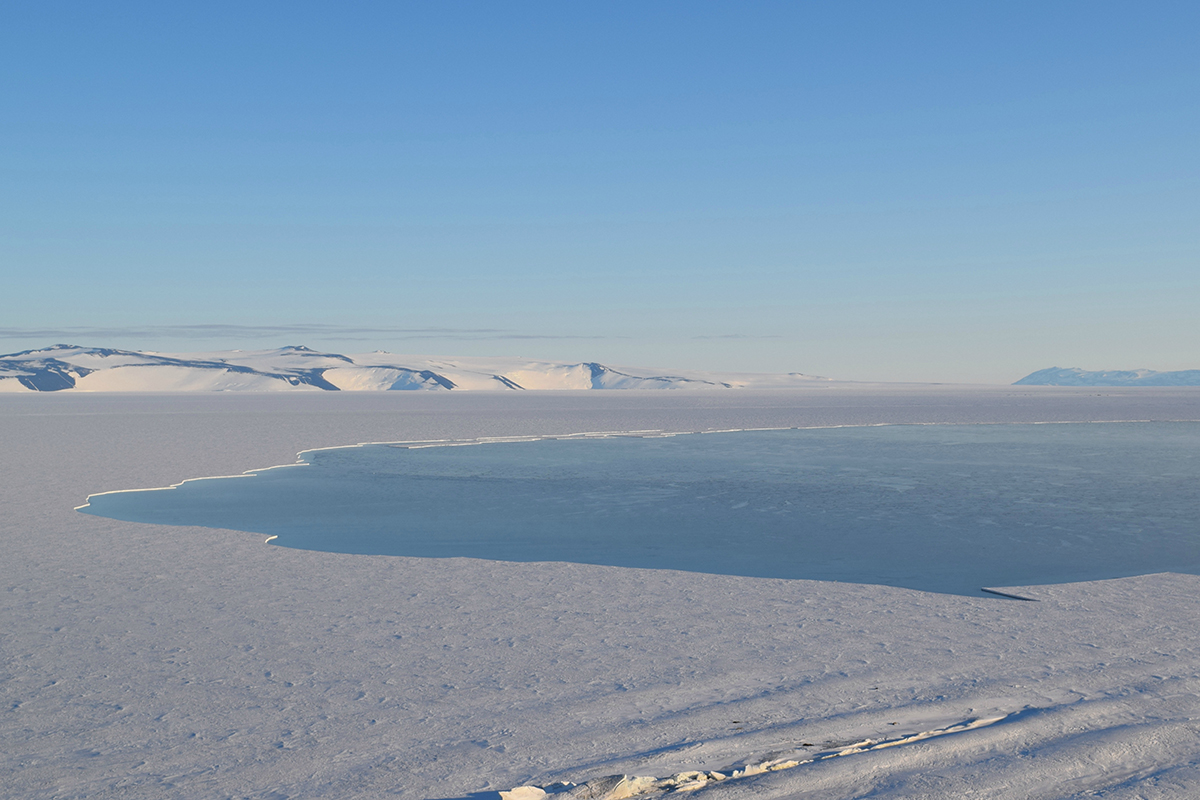
One bright summer night (I worked at night, and in the Antarctic summer there is no darkness at all), I had a single passenger named Kirsty, a polar geophysicist whose research team was mapping the Ross Ice Shelf for the very first time. The shelf’s general, geographic outline had long been charted, but the thickness of its ice and the geography of the seabed underneath had not.
Underneath our tires, below the ancient ice shelf was the most pristine marine ecosystem in the world. The Ross Sea, the “last ocean,” is teeming with vibrant, otherworldly life. In the auroral swaths of blue-green light filtering through the ice, elaborate jellyfish pulse through the water, their bells clear and vivid insides naked; silvery Wendell seals swirl through the polar sea like oil; chubby, fuchsia starfish litter the seabed, whose weird and wonderful community looks like a collaboration between Dr. Seuss and Salvador Dalí: doughy volcano sponges, bioluminescent crustaceans, carnivorous anemones, soft corals, tentacled bryozoans.
For several weeks, airplanes laden with highly perceptive equipment criss-crossed the ice shelf, that enormous frozen muscle, collecting data. The scientific instruments were sensitive enough to detect a seal on the surface of the ice, so I asked if Kirsty had found Scott’s tent or spotted Henry Worsley, a former British soldier turned modern explorer, who was currently crossing the entire continent, alone and unaided.
I had heard about Worsley’s quest in a station-wide email, complete with a picture of him smiling brightly at the South Pole. He was fundraising for injured veterans by doing something no one had ever done solo: completing the transantarctic journey Ernest Shackleton embarked on in 1914 but could not complete. Worsley was on the barrier, the final stretch, and I hoped he would be passing through McMurdo Station so I could meet him.
Kirsty said they hadn’t detected Scott’s tent-tomb from the sky, and nor would Worsley, or anyone, encounter it. In 2001, glaciologist Charles Bentley estimated that Scott’s body was under 75 feet of ice and would reach the edge of the barrier in 275 years. Then it would float out in an iceberg into the last, perfect sea.
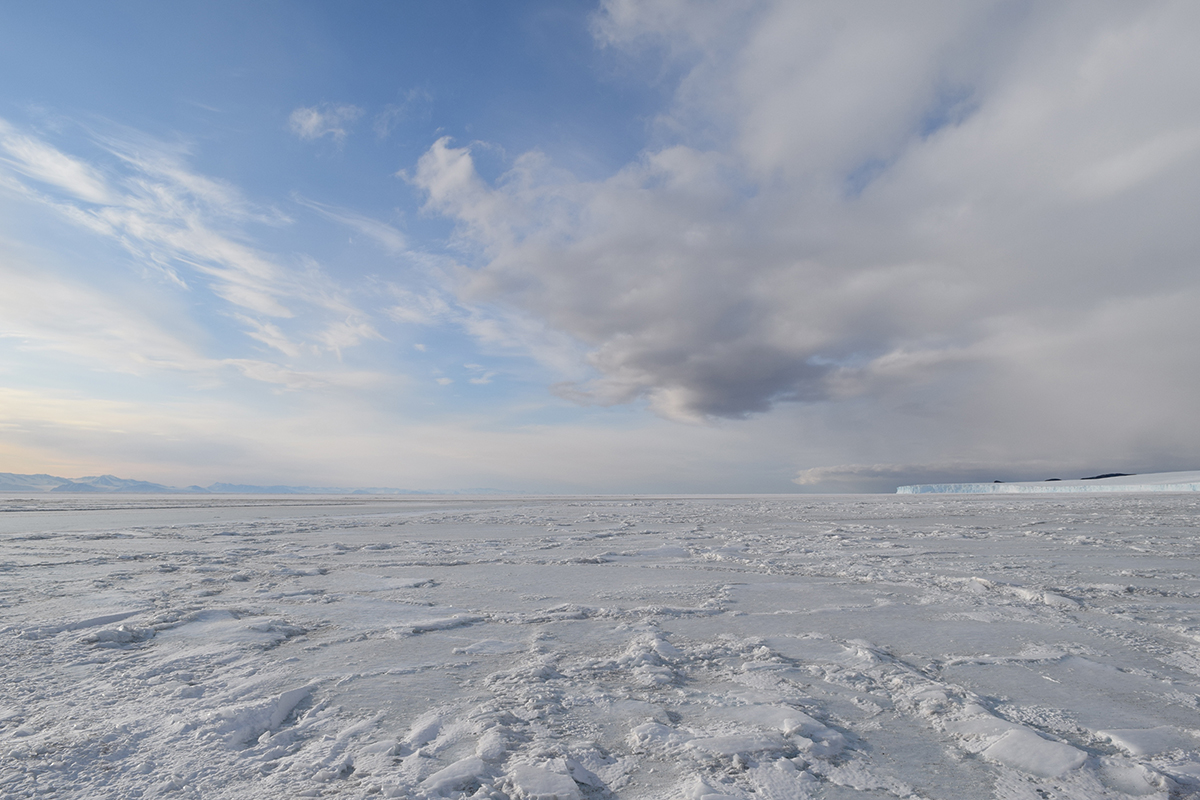
The barrier feels like the beginning of things, or the end. You see ice, frozen for ages, slowly morph into the sea—this is where water is born. You watch the endless summer sun swirling around your head day and night, its sunsets and sunrises lasting hours and hours, bathing the world in rose, gold, lavender, copper, grey, milk-blue—and it is hard not to believe that this is where light—all light—and color itself come from, too. You grow to admire the simple beauty of the horizon, the ever-encircling line that divides the temperamental polar sky from its shifty waters and ancient snowscapes. The wind that delivers air and life into our lungs must also come from the Ice, because here the wind is tireless, always busy re-sculpting the ice shelf’s surface: inviting, smooth silk brocade one day and ominous, demented waves of sastrugi the next.
Antarctica’s loveliness is untamed, radiant, metaphysical, staggering and her mysteries are hidden from us, like sky-shielded gods. Though not everyone gets to come face to face with the Ice, her gifts are pearls strewn generously at everyone’s feet.
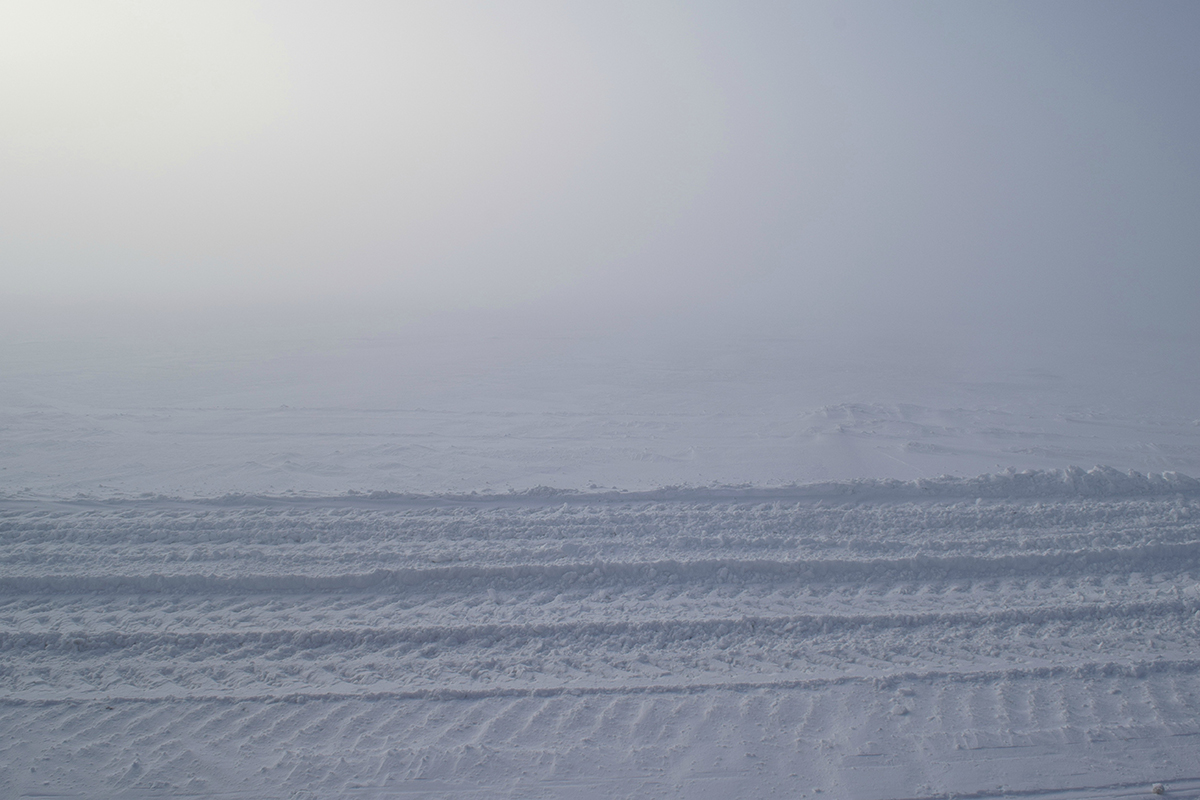
Henry Worsley died in late January, only 30 miles short of his goal on the barrier. Two days after collapsing in his tent, unable to continue, he was airlifted to Chile, where he died of organ failure. Worsley was a lieutenant colonel who survived two tours in Afghanistan, was supported by princes William and Harry, taught needlework to prisoners in his spare time, was a husband and father of two, and hero to many. The polar desert doesn’t play favorites, so why would anyone, including me, risk going to a place where life is barely possible?
People come to Antarctica for as many reasons as there are types of ice. Most come for the adventure. Some seek scientific truths, or other kinds of truth. Others want a challenge or an escape. Some pursue the unknown, self-revelation, answers, peace. A few go just for the penguins or simply because they can. All of these reasons echoed in my heart, but there was something else: a call, a pull toward the wilderness that I cannot explain.
That night—at the bottom of the world, at the edge of its wilderness—I did something I hadn’t before: I got out of my van and walked to a place where all I could see was the barrier—no mountains or buildings or volcanoes in sight. I looked at the ice shelf and the sky: both were a matte, dull gray and together formed a clear, dark horizon. The wind did not move, and neither did the flags: wind-tattered nylon rectangles whose primary colors were at varying stages of fading.
I recalled when, weeks before, a blizzard ripped across the ice shelf and I couldn’t see the road I was driving on. All I could see was one flag at a time, marking the road. I picked up passengers at the airfield, and to return to the research station I had to momentarily leave the road and forfeit sight of my one flag—there was no other option. I arced the wheel, and the world vanished. I held my breath; my passengers were silent. And then, out of nothing, ex nihilo, life reappeared in the form of trembling green fabric.
You inch toward the flag, the outward sign—don’t lose sight. You move past the flag, hoping for the next—and it appears. You move past it, and then another, and another. If you stop seeing flags, you hunker down in your van, in the icy heart of the storm, and you wait. You wait, like a desert father, for a voice or an omen. Because, eventually, the storm will relent. After four months of unrelenting winter darkness, the sun will rise. You will see a flag. An airplane will come back for you.
I stood on the Ice for a very long time, staring at the seam that hems the earth together, until I was too cold, until it was time to go back.
Stephanie Krzywonos writes at native-traveler.com.

